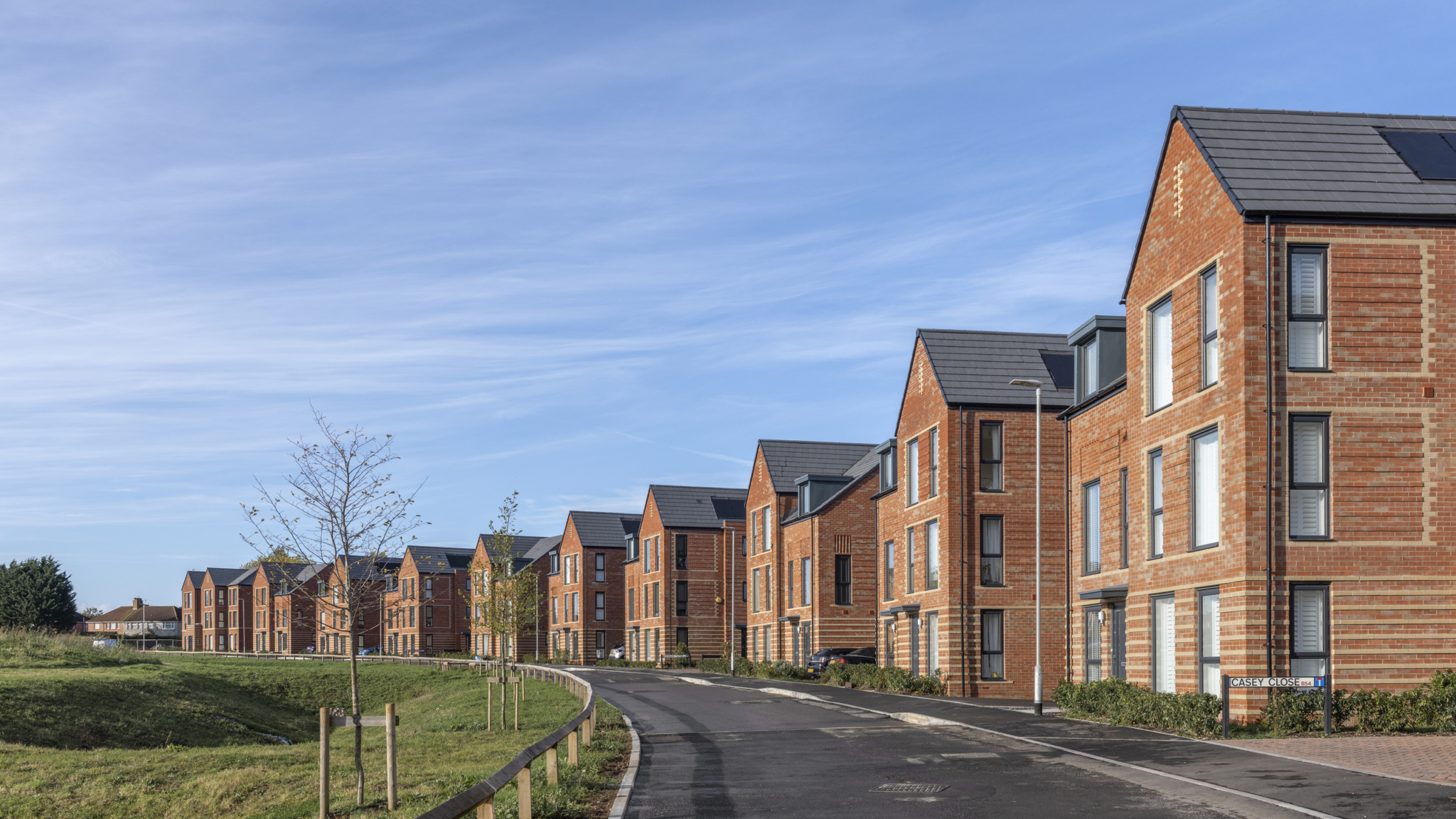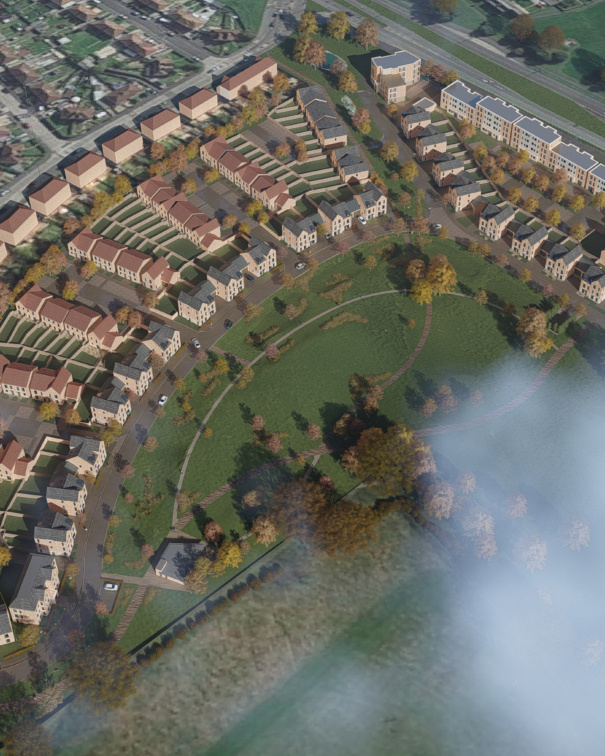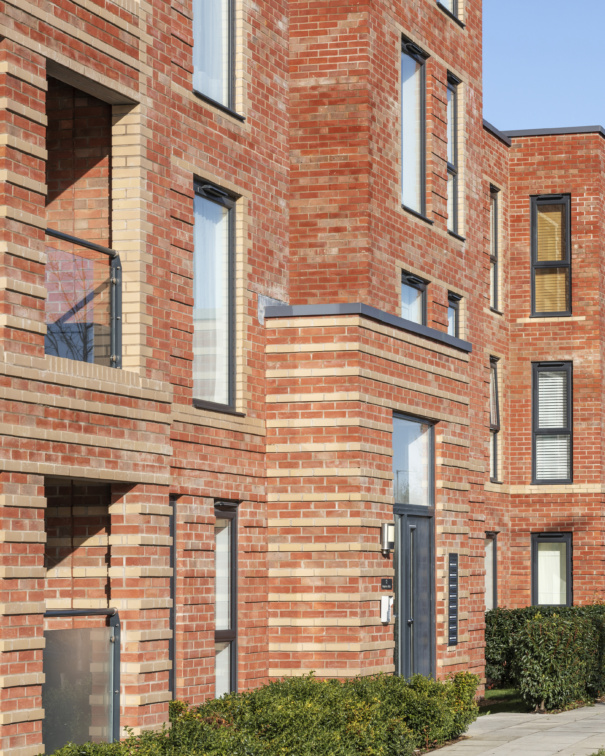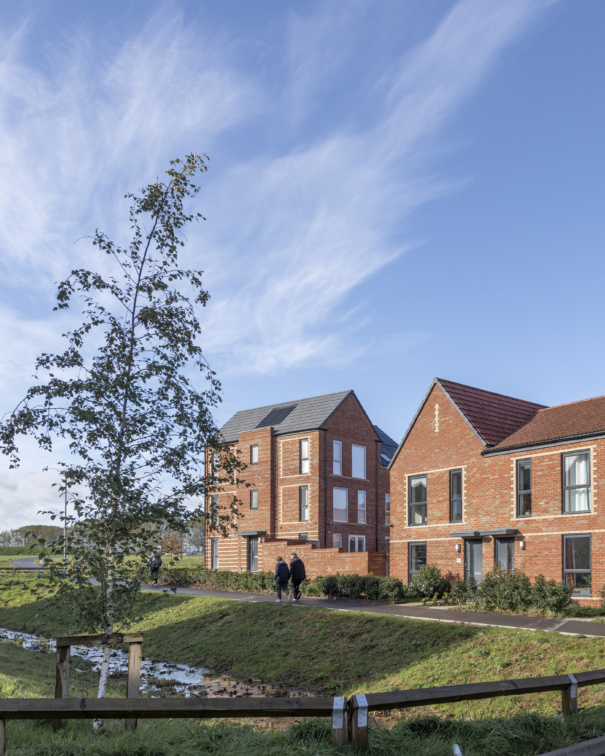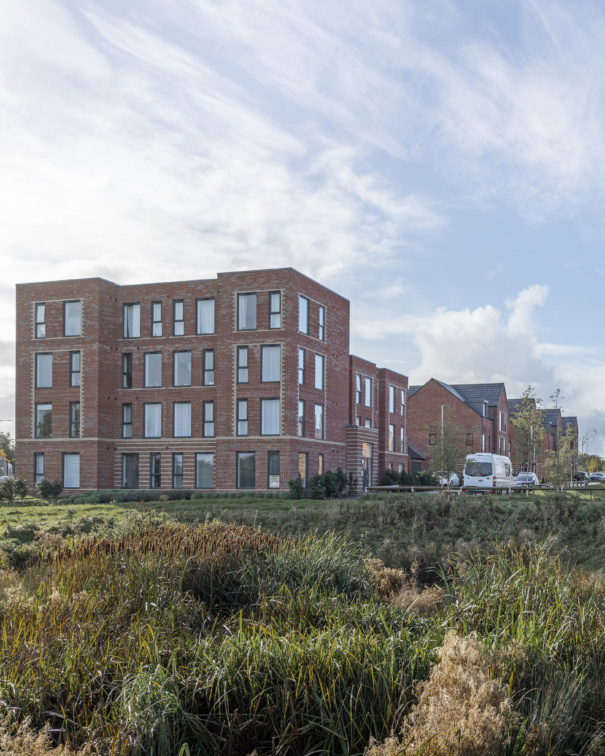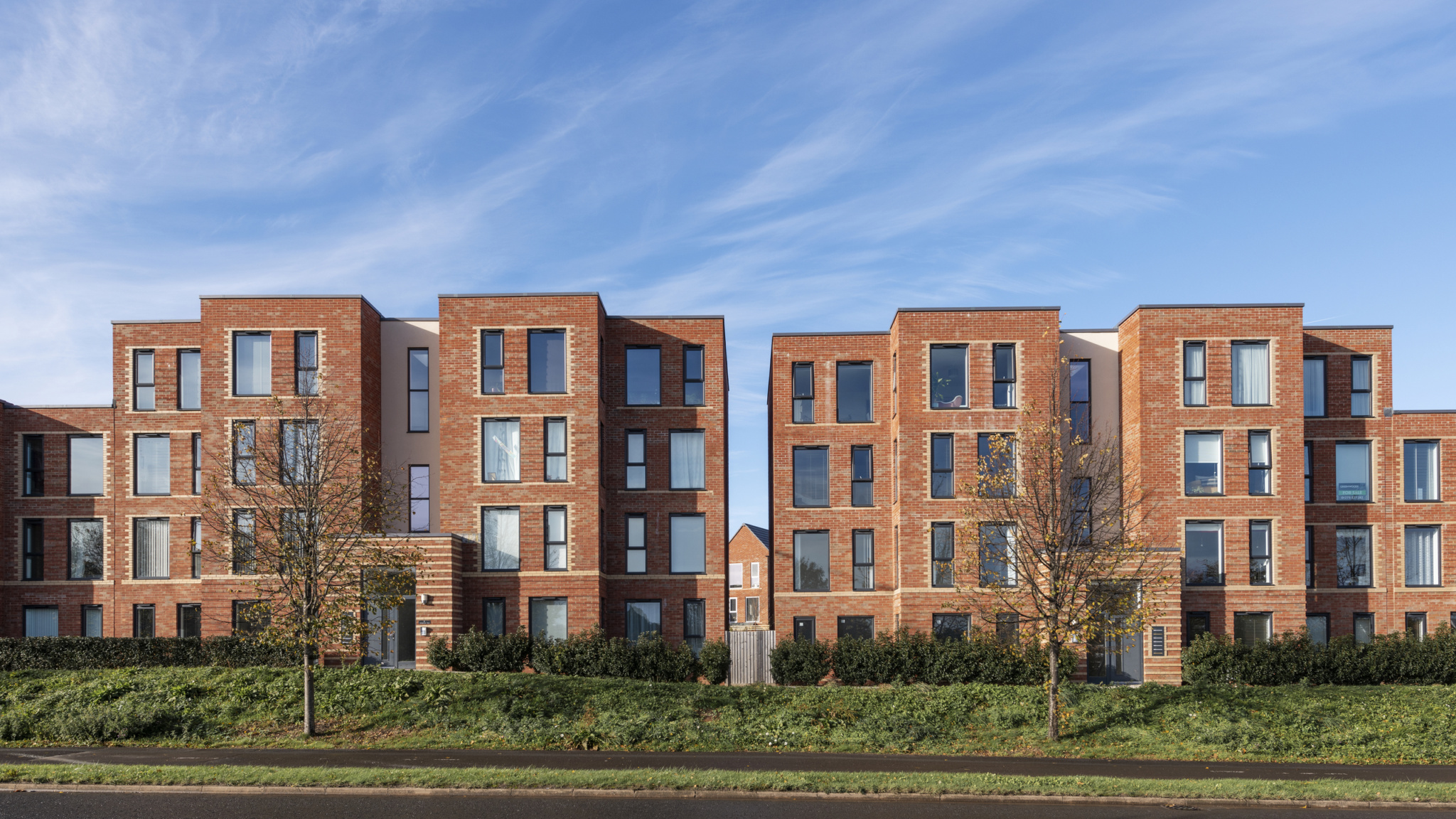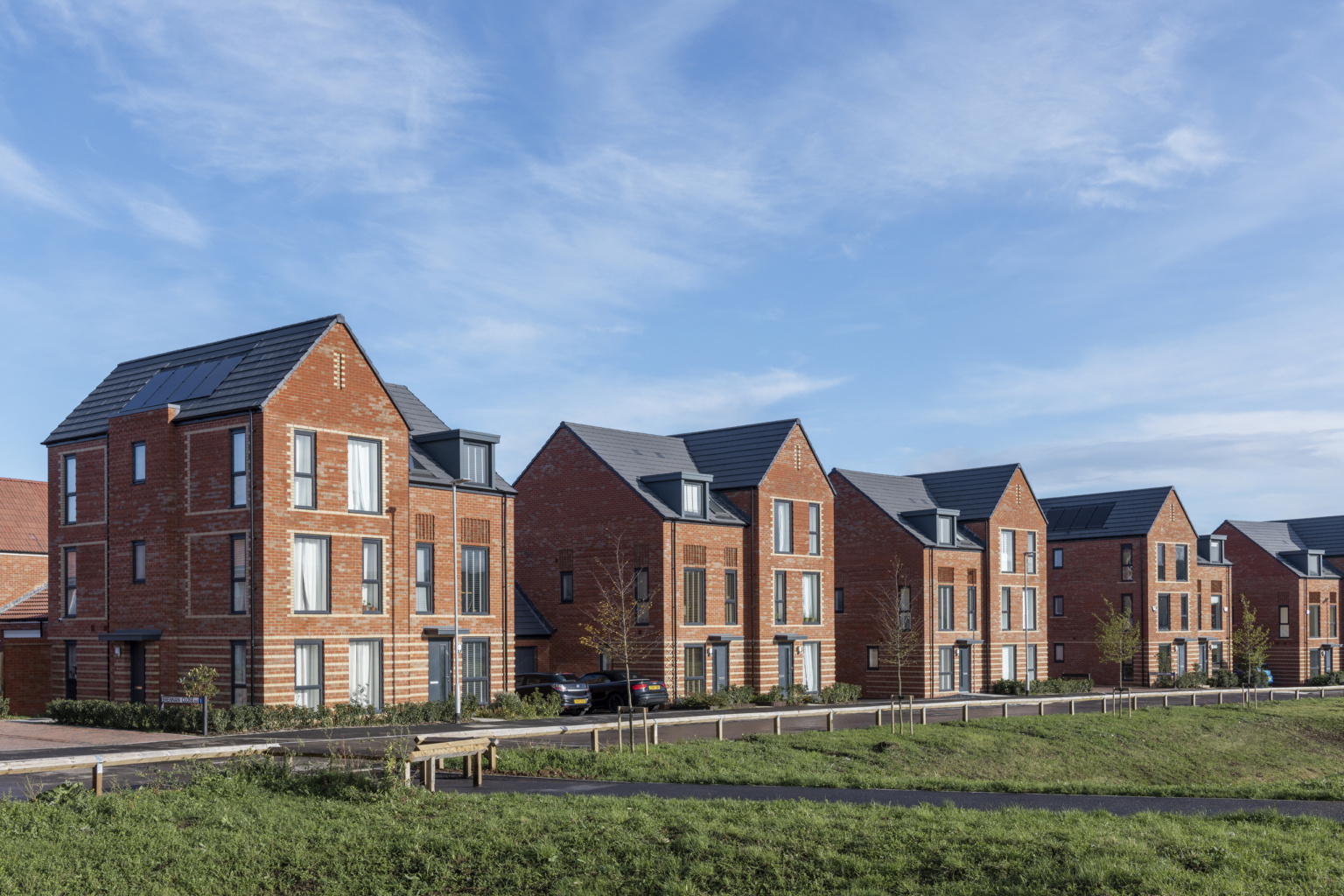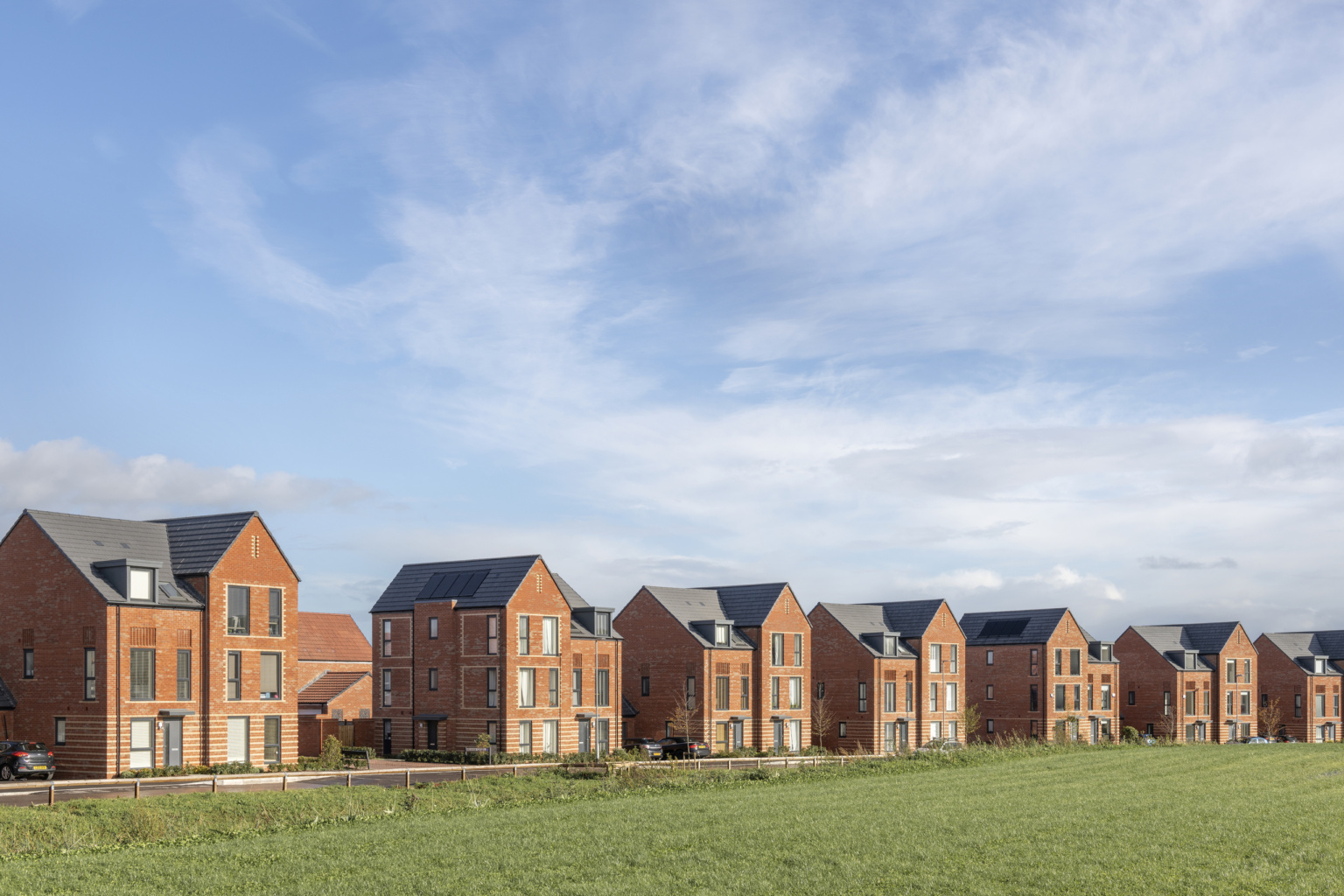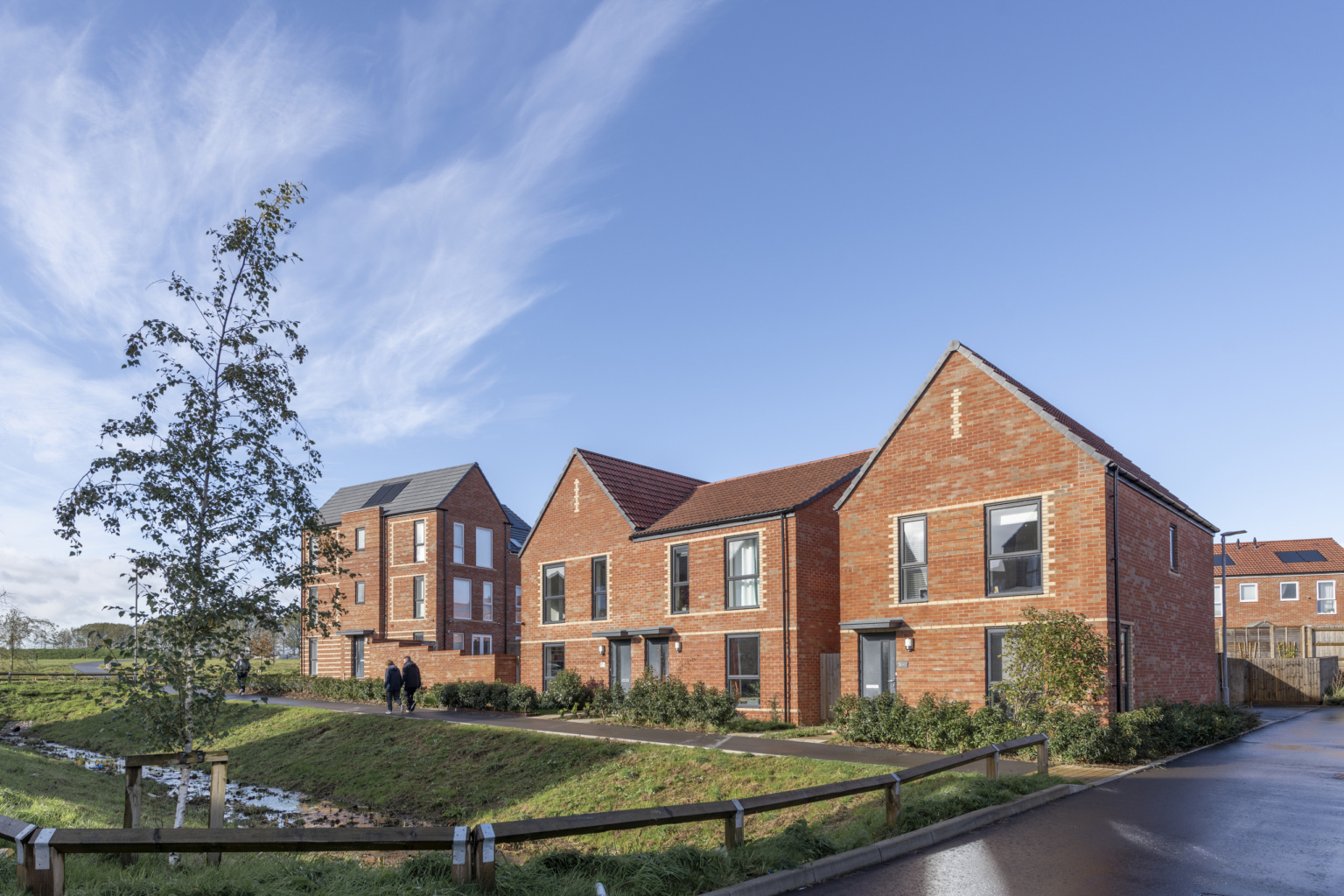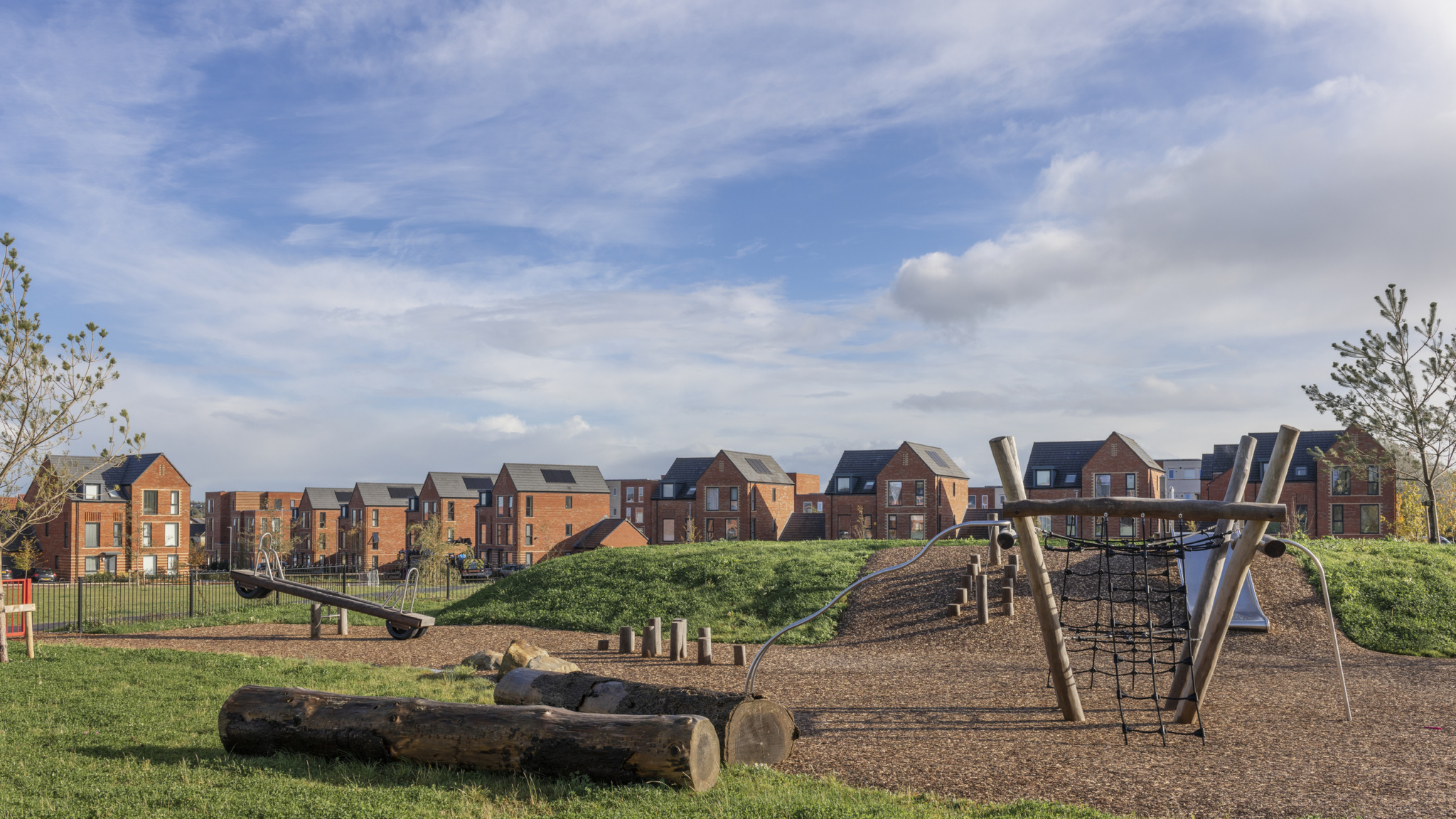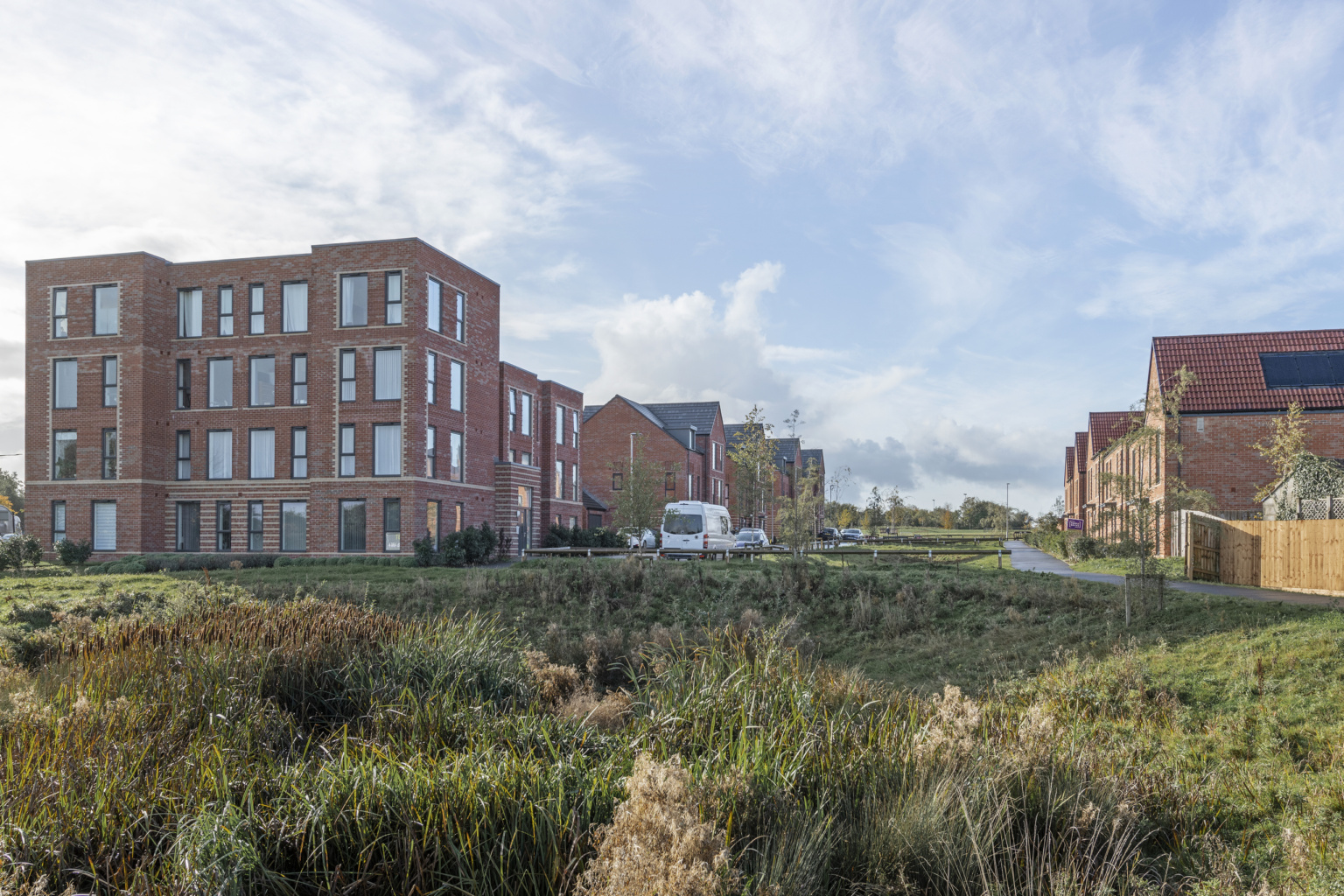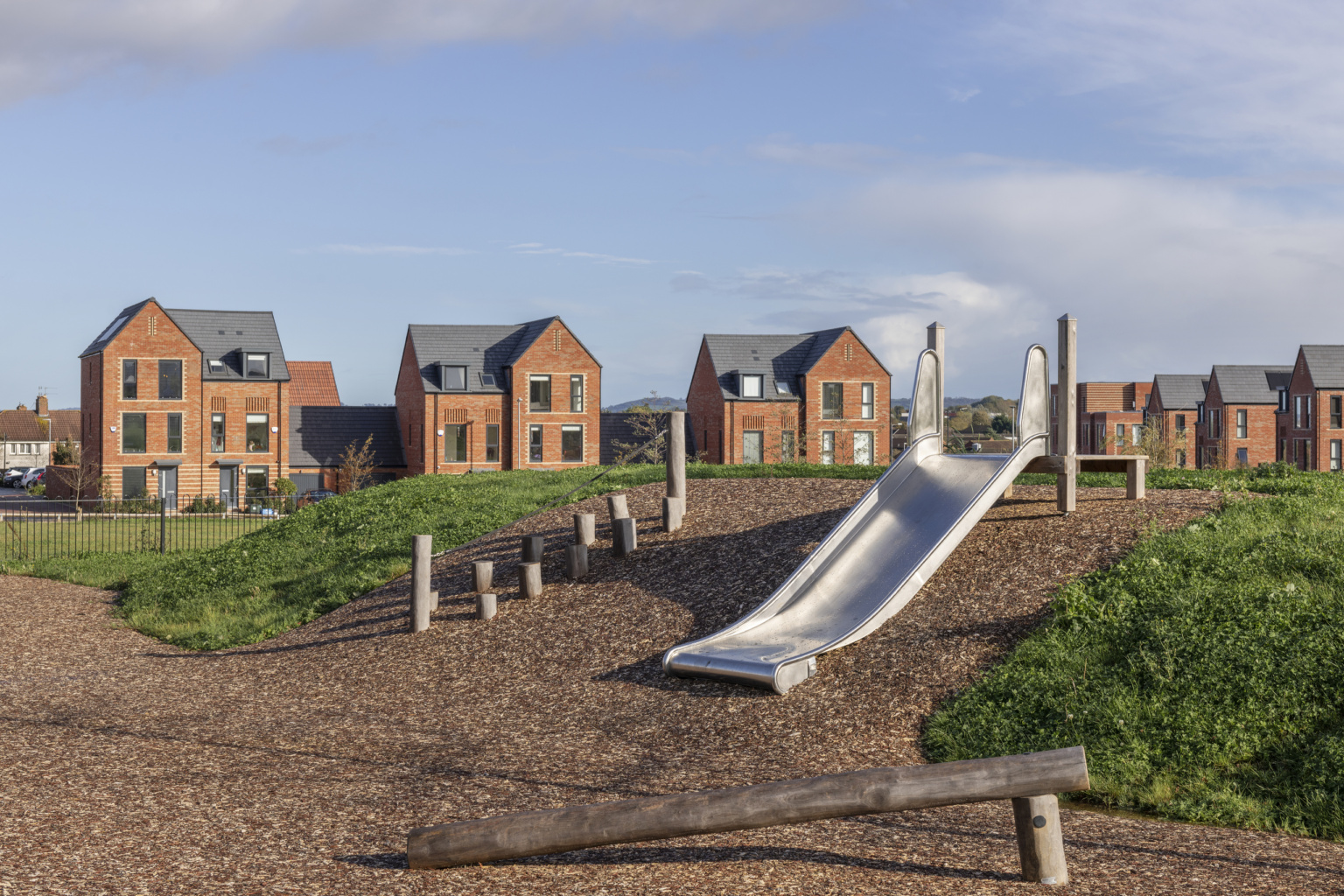How did the design and layout create distinct neighbourhood spaces?
The site was formerly occupied by support buildings for the old Bristol airport and is bounded to the east and north by the rear gardens of houses, to the south by a dual carriageway, and to the west by playing fields with views towards Dundry Down.
Our approach was to compose the townhouses as a crescent of paired houses fronting onto the park with a formal avenue of trees laid out in front, giving a sense of enclosure to the open space. These houses have first floor living spaces allowing views over the park and Dundry Down in the distance. A series of courtyard streets radiate from the park crescent to the eastern boundary to close the urban block, making small neighbourhood spaces for the short terraces of 2-storey houses. The flats on Hengrove Way create a stronger, more protective frontage and are set further back to suit the scale of the road.
How does the architectural detailing contribute to creating a distinctive identity for the housing while respecting the arts and crafts design of the Knowle West Estate?
Deliverability and affordability were vital. Therefore, standard house types were designed with a contemporary palette of details to create a distinctive identity. Particular attention is paid to roof forms. Gables articulate the paired houses along the park crescent and mark the ends of terraces on the courtyard streets. The blocks to Hengrove Way have flat roofs edged with brick parapets. The principal material used in all the buildings is a combination of red brick with white brick, providing accents to accentuate windows. Projecting string courses add a finer texture to the ground floor level and are used between windows to compose these elements on the elevations. A saw-toothed brick detail provides head-to-key windows and a decorative touch to gables. The approach has been to create a strong identity for the housing, in keeping with the arts and crafts design of the Knowle West Estate.
How is the scheme enabling a low-carbon lifestyle?
Pedestrians are prioritised with raised tables along the park frontage aligned with junctions to the courtyard streets, making crossing points for residents and calming traffic.
The homes are highly efficient, meeting the Code for Sustainable Homes level 4. Large windows promote good access to daylight and healthy lifestyles; all homes achieve dual aspect, with many triple aspects. The roof forms incorporate solar PV panels in optimum orientation while reducing their visual dominance by positioning them discretely. All homes are fitted with water butts to minimise water use, adding to the energy-efficient design.

